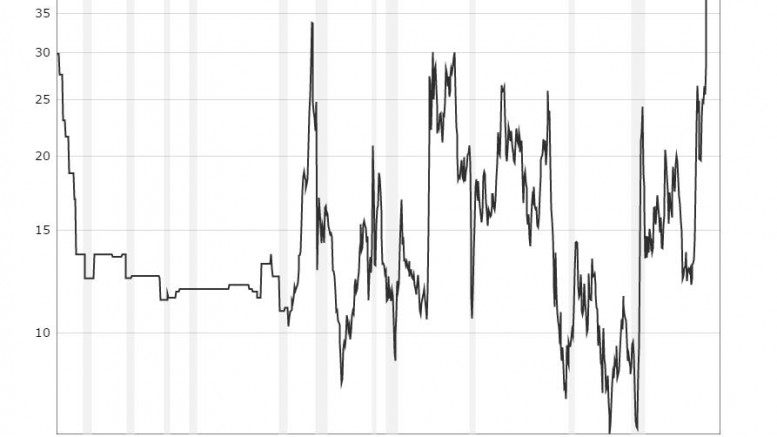We’ve had another momentous week in the commodity markets, with oil prices dropping to 13-year lows below US$30 per barrel, copper sliding under US$2 per lb., the Canadian dollar dipping under US70¢ and world stock markets hobbling into the new year in a deep funk. It feels a lot like 2003 all over again.
The big exception to the commodities slump in January is the spot gold price, which looks to have bottomed at US$1,060 per oz. in late December, and has held its own and even strengthened as January has progressed, to trade at US$1,090 per oz. at press time, or up 3% so far this year, after having breached US$1,100 per oz. mid-month. Gold’s gains look even better in the currencies of leading commodity-exporting countries such as Canada, South Africa and Australia.
Signs that the U.S. Federal Reserve will keep interest rates ultra-low in the face of an ailing global economy also bode well for gold, with the opportunity cost for holding gold bullion minimized.
Equally as refreshing for gold sector investor is that gold-mining stocks are once again living up to the gold bugs’ perennial pitch, having showed nice leverage to gold, with many major gold-mining stocks up 10% or more so far in 2016. The stock action has buried, at least for now, the decoupling of gold bullion prices and gold mining stocks we’ve seen in recent years.
But the good technical news doesn’t stop there: so far in January 2016 the oil-to-gold ratio has blown through the roof to an astounding 37.5 barrels per oz. gold, and is shooting towards the highest monthly average level on record since World War II.
The January figure is more than double the average over the past 30 years of 17.
Other notable cyclical highs and lows of the modern era are 24.31 in February 2009 at the end of the Great Recession; 6.89, when oil prices peaked in July 2008 at the start of the Great Recession; 8.98 in June 1982 during the recession of the early 1980s; 33.76 in June 1973, during the OPEC oil shock; and 29.91 in January 1946 after World War II.
The longest-lasting spike in the oil-to-gold ratio was 16 months during the 1972–73 oil shock and the U.S.’s abandonment of the gold standard.
Today on the world oil stage, of course, there has been the major development of most sanctions having been lifted against Iran, making way for the country to increase its oil production by 500,000 barrels a day in the near-term so that it can regain lost market share. Iran used to export 2.3 million barrels a day, but its crude exports fell to 1 million in 2012, when the international community imposed sanctions on the country in response to the Iranian regime’s rogue nuclear weapons program.
The common view is that Saudi Arabia, as an ultra low-cost producer seeking to retain its market share and regional hegemony, has no intention of scaling back its oil supply to make space for new Iranian oil hitting the market, meaning we can expect the current oversupply of crude oil to grow in the short-term. This would likely result in lower oil prices for longer and, if gold prices keep steady, an extension of the historically high oil-to-gold ratio.



Be the first to comment on "Editorial: Oil-to-gold ratio hitting all-time high"